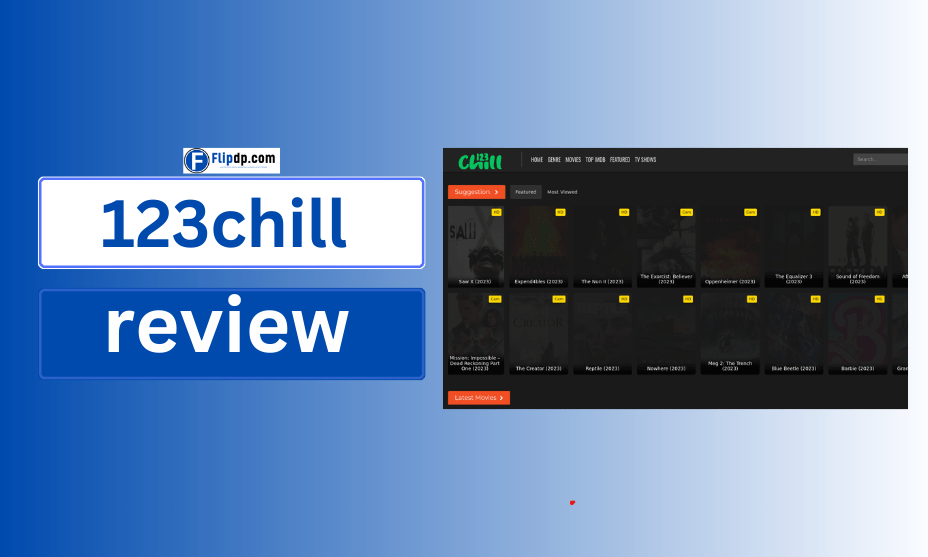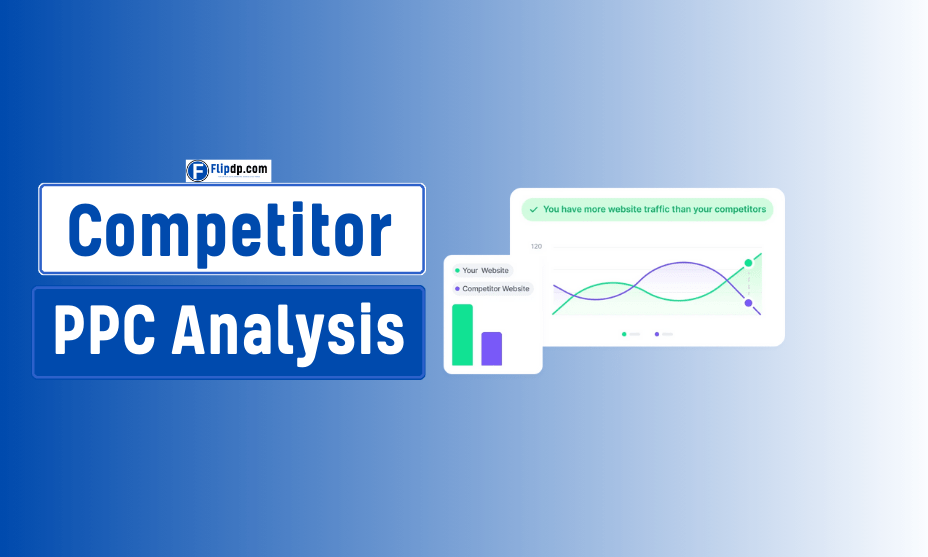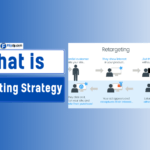In the fast-paced world of digital marketing, staying ahead of your competition is more crucial than ever. One powerful way to gain a competitive edge is through competitor PPC analysis. This process involves examining your competitors’ pay-per-click (PPC) advertising strategies, understanding their tactics, and leveraging insights to enhance your own campaigns. In this comprehensive guide, we will explore the intricacies of competitor PPC analysis, its benefits, and practical steps to implement this strategy effectively.
What is Competitor PPC Analysis?
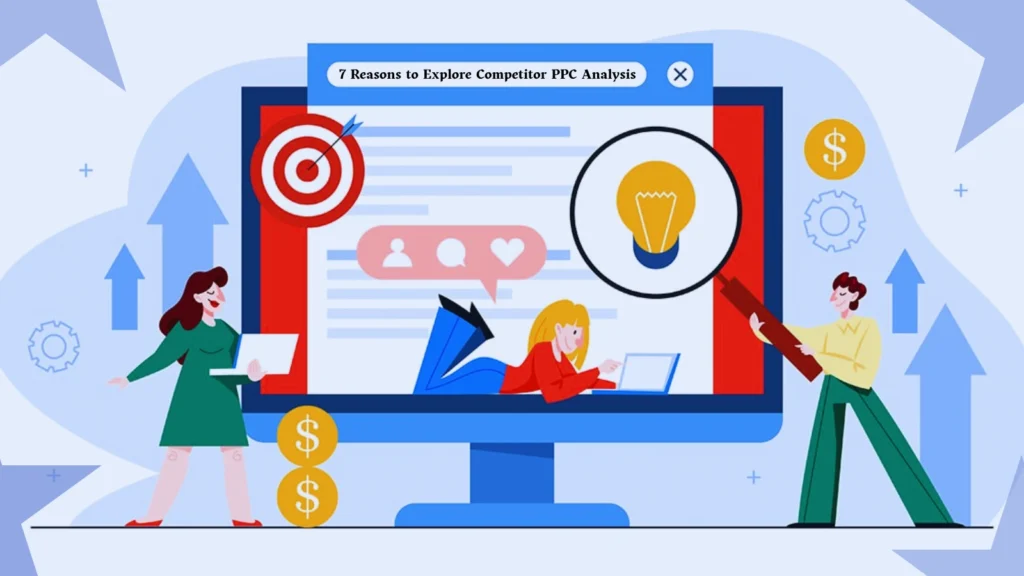
Competitor PPC analysis refers to the systematic examination of the pay-per-click advertising strategies employed by your competitors. This analysis includes evaluating their ad copy, keywords, bidding strategies, landing pages, and overall performance. By understanding how your competitors operate within the PPC landscape, you can develop more effective marketing strategies, improve your ad placements, and ultimately drive higher conversion rates.
Why Competitor PPC Analysis is Essential for Your Marketing Strategy
Competitor PPC analysis is not merely a trend; it is a fundamental aspect of a successful marketing strategy. Here’s why:
- Identifying Gaps in Your Strategy: By analyzing competitors, you can spot areas where your strategy may be lacking. For instance, if a competitor is targeting specific keywords you haven’t considered, it may present an opportunity for you to capitalize on those terms.
- Understanding Market Trends: Competitor analysis provides insights into industry trends and consumer behavior. If many competitors shift their focus to a particular product or service, it may indicate a rising demand.
- Optimizing Ad Spend: Understanding how competitors allocate their budgets can inform your own spending decisions. You can identify the most lucrative keywords and ad placements, reducing waste and maximizing ROI.
- Improving Ad Performance: By studying successful ad copy and landing pages, you can glean insights that lead to more effective campaigns.
Key Benefits of Conducting Competitor PPC Analysis
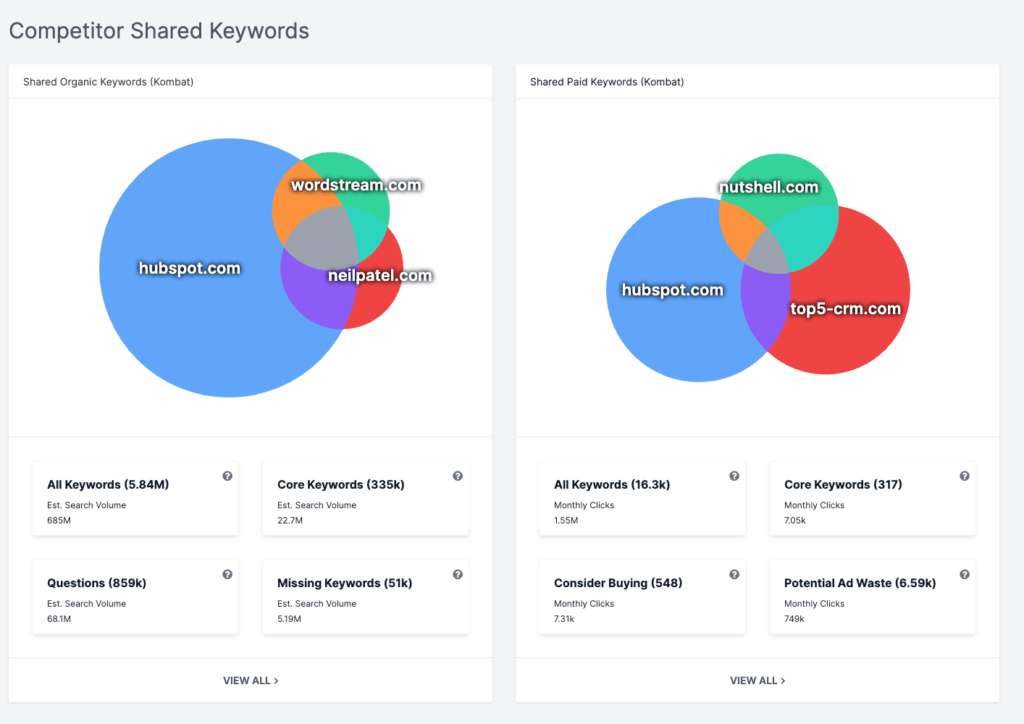
1. Enhanced Keyword Strategy
Competitor PPC analysis helps identify high-performing keywords that may not be on your radar. By leveraging these keywords, you can optimize your ad campaigns for better visibility and relevance.
2. Improved Ad Copy
Analyzing competitor ad copy can inspire your own creative process. You’ll discover what resonates with the audience and refine your messaging accordingly.
3. Strategic Bidding Insights
Understanding competitors’ bidding strategies can inform your own decisions regarding budget allocation and bidding techniques, leading to more efficient campaigns.
4. Comprehensive Landing Page Optimization

By evaluating competitor landing pages, you can identify elements that drive conversions and apply similar strategies to your own pages, enhancing the user experience.
5. Better ROI on Advertising Spend
A thorough analysis allows you to make informed decisions, leading to better allocation of your advertising budget and, ultimately, a higher return on investment.
How to Identify Your Main Competitors for PPC Analysis
Identifying your main competitors is the first step in conducting effective PPC analysis. Here are some methods to help you pinpoint them:
- Search Engine Results: Perform a Google search for your primary keywords. The ads that appear at the top of the search results are your direct competitors in PPC.
- Industry Analysis: Utilize industry reports and market analysis tools to identify key players in your niche. Look for companies that consistently appear in search results for your target keywords.
- Competitor Research Tools: Tools like SEMrush, SpyFu, and Ahrefs can provide detailed insights into competitors’ PPC strategies, including their top keywords and ad copy.
- Social Media Platforms: Analyze social media ads to see which brands are targeting similar audiences. This can reveal competitors that may not appear in organic search results.
Tools You Need for Effective Competitor PPC Analysis
To conduct a thorough competitor PPC analysis, you will need a range of tools designed to provide insights into competitors’ strategies. Here are some essential tools:
- SEMrush: This tool allows you to analyze your competitors’ PPC campaigns, including keywords, ad copy, and budget estimates.
- SpyFu: SpyFu specializes in PPC competitor research, providing insights into the keywords competitors are bidding on and their historical performance.
- Ahrefs: Known for its backlink analysis, Ahrefs also provides PPC insights, allowing you to track competitors’ ad performance.
- Google Ads Auction Insights: This feature within Google Ads provides information on how your ads perform compared to competitors, offering insights into their strategies.
- Facebook Ad Library: This resource allows you to view all ads currently running on Facebook, giving you insight into your competitors’ social media advertising strategies.
Step-by-Step Guide to Performing Competitor PPC Analysis
Step 1: Define Your Objectives
Before diving into the analysis, clearly define your objectives. Are you looking to identify new keywords, understand bidding strategies, or enhance ad copy? Setting specific goals will streamline your analysis.
Step 2: Identify Your Competitors
Use the methods mentioned above to create a list of your main competitors. Ensure you include both direct competitors (those selling similar products) and indirect competitors (those targeting the same audience).
Step 3: Analyze Competitor Ad Copy
Examine the ad copy used by competitors. Look for key elements such as:
- Headlines: Are they using compelling headlines?
- Calls to Action: What types of CTAs are they using?
- Unique Selling Propositions (USPs): What differentiates their offerings?
Step 4: Evaluate Keywords
Utilize keyword analysis tools to identify the keywords competitors are bidding on. Pay attention to:
- High-Volume Keywords: Identify keywords that drive significant traffic.
- Long-Tail Keywords: Look for niche keywords that may have less competition.
Step 5: Review Bidding Strategies
Analyze how competitors are approaching their bidding. Consider:
- Cost Per Click (CPC): What are they willing to pay for key terms?
- Bidding Techniques: Are they using automated bidding strategies, or do they manually adjust bids?
Step 6: Assess Landing Pages
Visit competitors’ landing pages and assess their design and content. Consider the following:
- User Experience: Is the page easy to navigate?
- Content Quality: Does it provide valuable information?
- Conversion Elements: Are there clear CTAs and conversion forms?
Step 7: Compile and Analyze Your Findings
Compile your findings into a report. Analyze the data to draw actionable insights and develop strategies for your own PPC campaigns.
Analyzing Competitor Ad Copy: What to Look For
When analyzing competitor ad copy, focus on the following elements:
- Emotional Triggers: Identify the emotional appeals used in their ads. Are they using urgency, exclusivity, or benefits?
- Keyword Usage: Note how competitors integrate keywords into their ad copy for relevance.
- Formatting: Pay attention to the structure and formatting of the ads. Do they use bullet points, questions, or statistics to engage users?
Understanding Competitor Bidding Strategies in PPC
Competitor bidding strategies can significantly impact your PPC success. Here are key strategies to analyze:
- Manual vs. Automated Bidding: Understand whether competitors are using manual bidding (adjusting bids themselves) or automated strategies (letting algorithms set bids).
- Bid Adjustments: Look for patterns in how competitors adjust bids based on time of day, device, or location.
- Competitive Positioning: Analyze how aggressively competitors bid on high-value keywords compared to lower-value terms.
Evaluating Competitor Landing Pages: A Comprehensive Approach
Landing pages play a crucial role in converting clicks into customers. To evaluate competitor landing pages effectively, consider:
- Design and Layout: Is the design visually appealing? Are key elements easily accessible?
- Content Relevance: Does the landing page content align with the ad copy and keywords?
- A/B Testing: Investigate whether competitors employ A/B testing to optimize their landing pages.
How to Analyze Competitor Keywords for PPC Success
Analyzing competitor keywords involves several steps:
- Keyword Research Tools: Use tools like SEMrush or SpyFu to uncover the keywords your competitors are bidding on.
- Competitor Keyword Strategies: Identify which keywords are driving the most traffic for your competitors and how they rank for those terms.
- Keyword Gap Analysis: Look for keywords that competitors rank for that you don’t. This can reveal potential opportunities for your own campaigns.
The Role of Competitive Intelligence in PPC Analysis
Competitive intelligence involves gathering and analyzing data about competitors to make informed decisions. In PPC analysis, this intelligence is invaluable for:
- Market Positioning: Understanding where your brand stands in relation to competitors.
- Strategy Development: Developing strategies based on competitor strengths and weaknesses.
- Trend Analysis: Identifying shifts in competitor strategies that may impact your own.
Utilizing PPC Analysis to Optimize Your Own Campaigns
Once you’ve gathered insights from competitor PPC analysis, it’s time to implement those findings:
- Refine Keyword Selection: Use high-performing competitor keywords to enhance your campaigns.
- Enhance Ad Copy: Apply insights from successful ad copy to improve your messaging.
- Adjust Bidding Strategies: Modify your bidding strategies based on competitor insights to increase ad visibility.
Common Mistakes to Avoid in Competitor PPC Analysis
- Ignoring Data Overload: It’s easy to get lost in the data. Focus on actionable insights rather than trying to analyze every detail.
- Neglecting Landing Pages: Focusing solely on keywords and ad copy while ignoring landing pages can lead to missed opportunities.
- Failing to Monitor Changes: PPC is dynamic. Regularly monitor competitors to adapt your strategy accordingly.
Real-Life Case Studies: Successful Competitor PPC Strategies
Case Study 1: E-commerce Brand X
Background: An e-commerce brand specializing in home decor aimed to increase its online visibility and sales through PPC advertising.
Competitor Analysis: The brand conducted a thorough competitor PPC analysis and identified two key competitors, both running successful campaigns on Google Ads.
Strategies Implemented:
- Keyword Expansion: By analyzing competitors’ keyword strategies, Brand X discovered several long-tail keywords related to “eco-friendly home decor” that were not in their original strategy. They added these keywords to their campaigns.
- Ad Copy Inspiration: Competitor ad copy focused on sustainability and quality. Brand X revised its ad copy to emphasize its eco-friendly products and unique selling propositions, like free shipping and 24/7 customer service.
- Landing Page Optimization: The analysis revealed that competitors had landing pages with high-quality images and customer testimonials. Brand X revamped its landing pages to include similar elements, leading to a 30% increase in conversion rates.
Outcome: Within three months, Brand X saw a significant boost in both traffic and sales, demonstrating the effectiveness of leveraging insights from competitor PPC analysis.
Case Study 2: Tech Startup Y
Background: A tech startup specializing in productivity software sought to increase its market share in a competitive landscape.
Competitor Analysis: The startup utilized tools like SEMrush and SpyFu to examine the PPC campaigns of larger competitors in the software space.
Strategies Implemented:
- Bidding Insights: They discovered that competitors were aggressively bidding on general keywords related to productivity. The startup decided to target niche keywords, such as “project management software for freelancers,” where competition was lower.
- Creative Ad Copy: The startup analyzed competitor ad copy that highlighted pain points. They adapted their messaging to resonate with potential users by focusing on time savings and user-friendly features.
- A/B Testing: Inspired by competitor landing pages, the startup launched multiple versions of its landing page to see which elements drove better conversions, such as different calls to action and layouts.
Outcome: The startup’s strategy led to a 40% increase in clicks and a significant reduction in cost-per-click (CPC), proving that tailored strategies based on competitor analysis can yield remarkable results.
Integrating Competitor PPC Insights into Your Marketing Plan
To effectively integrate insights from competitor PPC analysis into your marketing plan, follow these steps:
- Actionable Recommendations: Convert insights into actionable recommendations for your PPC campaigns, including new keywords to target and ad copy adjustments.
- Cross-Department Collaboration: Share findings with other marketing teams (such as content and social media) to ensure a cohesive strategy across all platforms.
- Monitor and Adjust: Continuously monitor your PPC performance against competitors and be ready to adapt your strategies as necessary.
- Regularly Update Analysis: Set a schedule for conducting competitor PPC analysis regularly to stay informed of market changes and new opportunities.
Measuring the Success of Your Competitor PPC Analysis
To determine the effectiveness of your competitor PPC analysis, consider the following metrics:
- Traffic Increases: Monitor changes in website traffic following the implementation of insights from your analysis.
- Conversion Rates: Track improvements in conversion rates, particularly for campaigns that incorporated competitive insights.
- Cost-Per-Acquisition (CPA): Evaluate how changes in your PPC strategy affect CPA. A decrease in CPA indicates successful optimization.
- Keyword Performance: Assess the performance of newly added keywords. Are they driving traffic and conversions as anticipated?
How to Stay Ahead: Continuous Monitoring of Competitor PPC
Staying ahead in the PPC landscape requires ongoing monitoring and analysis of competitors. Here are some tips for continuous monitoring:
- Set Up Alerts: Use tools like Google Alerts to receive notifications about competitors’ activities, including new ad campaigns or product launches.
- Regularly Check Ad Copy: Keep an eye on the changes in competitor ad copy and landing pages. This can signal shifts in their strategy.
- Benchmark Performance: Regularly compare your PPC performance against competitors to identify areas for improvement.
- Update Your Tools: Ensure your analysis tools are up to date and capable of providing the latest competitive intelligence.
The Future of Competitor PPC Analysis: Trends to Watch
As the digital landscape evolves, so will the strategies for conducting competitor PPC analysis. Here are some trends to keep an eye on:
- AI and Machine Learning: The integration of AI in PPC analysis will enable marketers to predict competitor behavior and adapt their strategies more effectively.
- Voice Search Optimization: With the rise of voice search, analyzing how competitors target voice queries will become increasingly important.
- Data Privacy Changes: As data privacy regulations tighten, understanding how competitors navigate these changes will be crucial for maintaining competitive advantage.
- Cross-Channel Strategies: More brands will adopt integrated marketing strategies, necessitating a holistic approach to competitor analysis across channels.
Leveraging Competitor PPC Analysis for Budgeting and Forecasting
Competitor PPC analysis can also play a vital role in budgeting and forecasting:
- Budget Allocation: Analyze competitors’ ad spend to inform your budget decisions. Understanding which areas yield the best returns can help allocate resources more effectively.
- Forecasting Trends: By identifying patterns in competitor spending and performance, you can make informed predictions about future trends and adjust your strategy accordingly.
- Risk Management: Competitor analysis can highlight potential risks and opportunities, allowing you to proactively adjust your PPC strategies and budgets.
Frequently Asked Questions About Competitor PPC Analysis
1. What tools should I use for competitor PPC analysis?
Commonly used tools include SEMrush, SpyFu, Ahrefs, and Google Ads Auction Insights. These tools provide valuable insights into competitor ad performance and keyword strategies.
2. How often should I conduct competitor PPC analysis?
Regular analysis is recommended, ideally every quarter, to stay updated on competitors’ strategies and adapt your own campaigns accordingly.
3. Can I use competitor insights without copying their strategies?
Absolutely! The goal of competitor PPC analysis is to gain insights and inspiration, not to replicate strategies. Use the findings to refine and improve your own unique approach.
4. What are the most important metrics to track after implementing insights from competitor analysis?
Key metrics include traffic increases, conversion rates, cost-per-acquisition (CPA), and keyword performance.
5. How can I ensure my PPC campaigns remain competitive over time?
Continuous monitoring, regular analysis of competitor strategies, and ongoing optimization of your own campaigns will help maintain competitiveness in the ever-evolving PPC landscape.
Conclusion
Competitor PPC analysis is an essential component of any successful marketing strategy. By understanding how your competitors operate in the PPC landscape, you can identify opportunities, optimize your campaigns, and improve your return on investment. From analyzing ad copy and bidding strategies to evaluating landing pages and keywords, this guide provides you with the tools and knowledge needed to excel in your PPC efforts. Stay proactive, embrace continuous monitoring, and leverage insights to keep your campaigns ahead of the competition.
FAQs, Competitor PPC analysis
1. What is Competitor PPC Analysis?
Competitor PPC (Pay-Per-Click) Analysis is the process of evaluating and studying the paid search strategies used by your competitors. It involves examining keywords, ad copy, budget, bidding strategies, and overall campaign performance to identify strengths, weaknesses, and opportunities.
2. Why is Competitor PPC Analysis important for my business?
Competitor PPC Analysis helps you gain insights into your rivals’ marketing strategies, allowing you to optimize your own campaigns. It can reveal lucrative keywords, effective ad copy, and budgetary insights, helping you improve your ROI and stay ahead in competitive markets.
3. How do I conduct a Competitor PPC Analysis?
To conduct a Competitor PPC Analysis, you need to:
Identify your main competitors.
Use tools like SEMrush, SpyFu, or Ahrefs to gather data on their keywords, ad copy, and performance.
Analyze their bidding strategies and ad placements.
Monitor their changes over time to detect trends.


